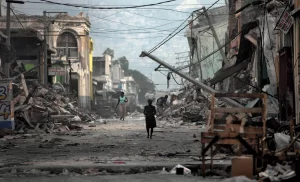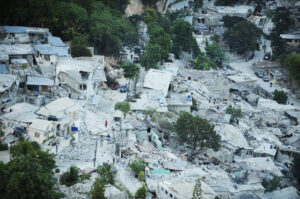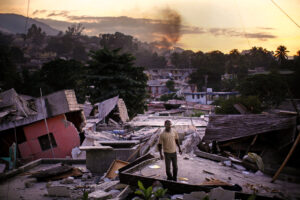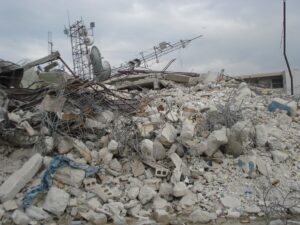
 Having a history of seismic activity, January 12, 2010’s, earthquake in Haiti was not a total shock, but what was shocking was the devastation when that quake turned out to be massive. So devastating was the quake, that there was an immediate global response. Unfortunately, that amazing response didn’t precipitate the full recovery of the tiny nation.
Having a history of seismic activity, January 12, 2010’s, earthquake in Haiti was not a total shock, but what was shocking was the devastation when that quake turned out to be massive. So devastating was the quake, that there was an immediate global response. Unfortunately, that amazing response didn’t precipitate the full recovery of the tiny nation.
Haiti’s history of seismic activity includes devastating earthquakes recorded there in 1751, 1770, 1842, and 1946. Haiti shares the island of Hispaniola with the Dominican Republic. The island lies mostly between two large tectonic plates, the North American and the Caribbean. Port-au-Prince, the capital of Haiti practically straddles this fault line. Despite knowing about the fault line and the warnings from seismologists that another earthquake was likely in the near future, the infrastructure and emergency services were not prepared to handle the effects of a natural disaster, because of the state of poverty of the country.
The 7.0 earthquake struck just before 5pm local time. The shaking was felt as far away as Cuba and Venezuela, but the epicenter was just 16 miles away from Port-au-Prince. Eight aftershocks followed in quick succession the same day, and at least 52 were recorded over the next two weeks. The quake’s effect on the area was catastrophic. All of the capital’s hospitals, with three facilities operated by Doctors Without Borders, sustained significant damage. Additionally, Port-au-Prince’s airport and seaport were rendered inoperable. Telecommunications services were severely affected, major roads were rendered impassable, and nearly 300,000 buildings, most of which were residences, were damaged beyond repair. The National Assembly building and Port-au-Prince Cathedral were also destroyed.
While the damage to the area was horrific, it pales when compared to the human toll. That number was devastating, remains incalculable. The lowest estimates put the number of deaths around 40,000 to 50,000, but the Haitian government estimated that more than 316,000 died. All of the authorities agreed that the death toll is impossible to truly count. In addition to the deaths, approximately 1 million people were displaced.
News and shocking images of the quake, including photos of the heavily-damaged National Palace, quickly brought about a massive humanitarian response. First to respond was the Dominican Republic and Dominican Red Cross, both of whom responded immediately. They brought in emergency supplies and airlifts to Dominican hospitals. Money, supplies, and manpower began to come in from nations on every continent. Port-au-Prince’s airport operated around the clock, but they could not accommodate all the arrivals. Foreign air forces, including those of the United States and Great Britain, began airlifting survivors to hospital ships located off the coast, and some supplies were dropped to the island by parachute. By January 22nd, the “Hope for Haiti” telethon had been organized, and broke records by raising $58 million in one day.
You might have thought that with all the responses, they country would be well on its way toward a full recovery, but while the humanitarian response was immediate and overwhelming, Haiti’s crippled infrastructure 
 made the delivery of aid difficult. Six months later, the situation was still classified as an emergency. A million people on the island lived in tents, and a cholera epidemic that began in October claimed over 3,300 more lives. Whether or not Haiti has yet fully recovered is a matter of debate today, 15 years later, but the effects of the earthquake were unmistakable for at least the next decade.
made the delivery of aid difficult. Six months later, the situation was still classified as an emergency. A million people on the island lived in tents, and a cholera epidemic that began in October claimed over 3,300 more lives. Whether or not Haiti has yet fully recovered is a matter of debate today, 15 years later, but the effects of the earthquake were unmistakable for at least the next decade.


Leave a Reply